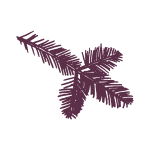Terminology Introduction

Deciding what terminology to use to identify Indigenous people is important, especially considering the historical and present context in which terminology is used to marginalize and oppress the original inhabitants of this land. The word Indigenous is itself a good place to start. Those who are considered Indigenous today, are descendants of people who were living on this land prior to colonization by Europeans.
You will still find the term Aboriginal, rather than Indigenous, used in some contexts, including official Canadian Government documents, but the term Indigenous is becoming the preferred overall term to use. Note that throughout Skoden, Indigenous is capitalized though this is not always done in other contexts.
In what is now known as Canada, there are three distinct groups of Indigenous people — First Nations, Métis, and Inuit. According to their own traditions and teachings, the Inuit and First Nations people have been on this land since time immemorial (forever). People who identify as Métis are descendants of First Nations and European parentage.
Indigenous people identify themselves in many different ways. A term that one person embraces could offend another. It is important to be respectful of how Indigenous people themselves want or choose to be identified.
To get started, watch the short video, How to Talk About Indigenous People, that clearly explains use of the terms Indigenous, Aboriginal, First Nations, Métis, and Inuit.
Consider as you view the video:
- What is your own level of comfort or awareness about what terms to use in relation to the people Indigenous to Turtle Island?
- What terms did you learn growing up?
- If you are not Canadian born, what terms might you have heard used to refer to people who are First Nations, Métis, and Inuit?
For a global perspective on Indigenous peoples see: Who are indigenous peoples? and Indigenous Peoples at the United Nations.

